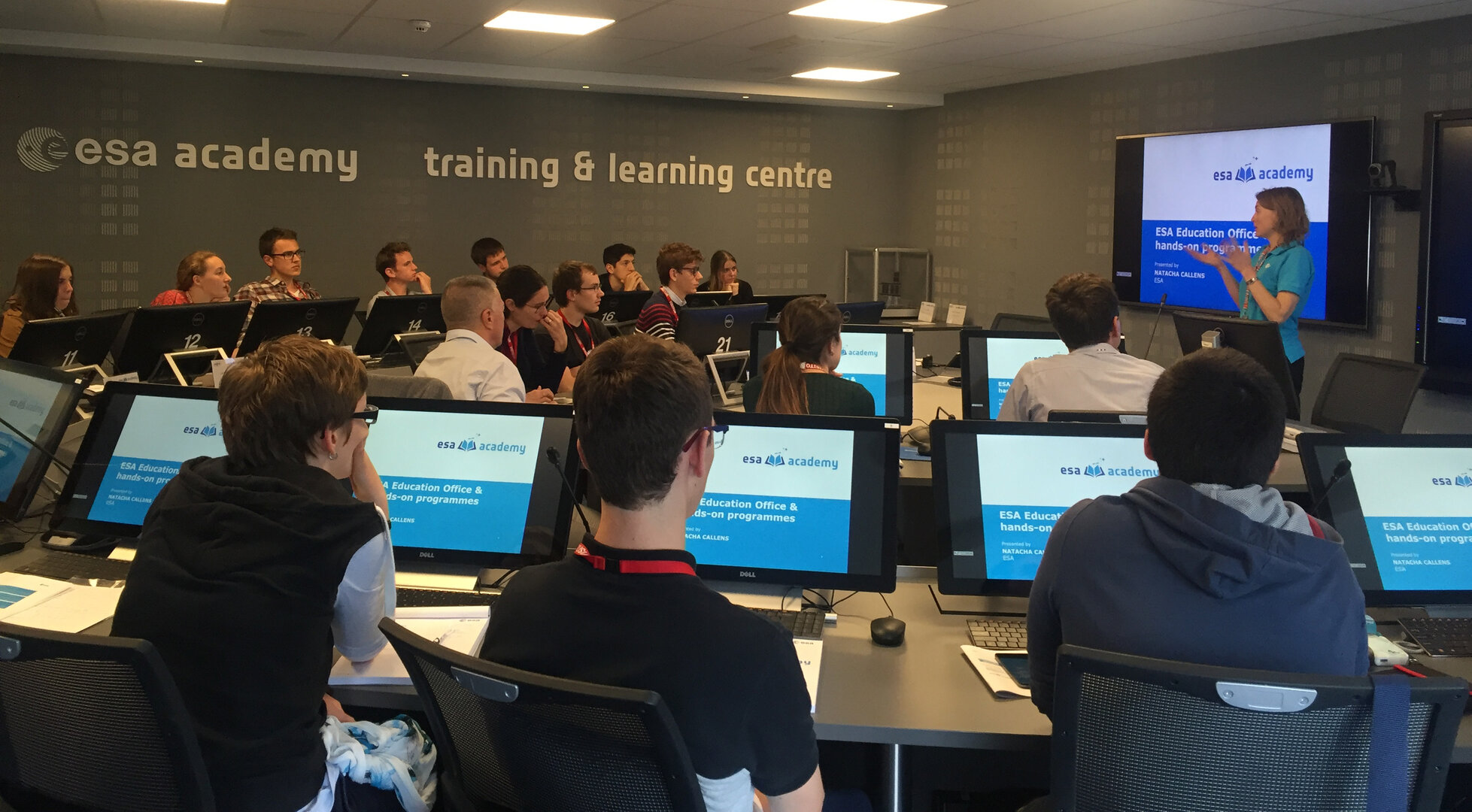Call for university applications - Concurrent Engineering Challenge 2017
ESA is now looking for universities in Member or Associate State* who would like to participate in the first ESA Academy Concurrent Engineering Challenge with their students. This challenge will be organised by the ESA Education Office, in collaboration with ESA’s Systems and Concurrent Engineering Section, for September or October 2017.
Concurrent Engineering is a method of designing and developing products for the space sector. Contrary to traditional design methods, in Concurrent Engineering all subsystems are designed simultaneously. This is a far more efficient way of designing, but comes with its own difficulties. Solutions in one area that could impact the design in another must be identified and communicated instantly. Although Concurrent Engineering is a more complicated process to begin with, in effect it allows mistakes to be identified earlier, therefore reducing the overall design time.
ESA’s main Concurrent Design Facility (CDF) is located at ESA’s Technology Centre (ESTEC) in the Netherlands. At ESA Redu Centre, part of the ESA Academy, ESA has developed a similar facility exclusively for educational purposes.
Details of the challenge
The ESA Academy Concurrent Engineering Challenge will feature groups of 15-25 students, each one supervised by two system engineers in different CDFs within ESA Member and Associate State universities; and an additional group in ESA Academy’s Training and Learning Centre. Groups will be given a specific mission to design within four days.
Students in each group will be divided into small teams of two or three to cover the following disciplines: structures, configuration, power, mechanisms, thermal, Attitude and Orbit Control System for a Satellite (AOCS), propulsion, optics / sensors, trajectory analysis, and communications / data handling. Students within each small team will create a subsystem concept in order to later achieve the mission parameters using the Concurrent Engineering approach.
The groups will not compete against each other, but will rather use video conferencing to share each day’s progress, raise any particular difficulties they are facing, and receive helpful input from the other participants. At the end of the week each group will present their final design.
Ultimately, students involved in the challenge will learn about the Concurrent Engineering approach and its benefits, and how to use the Open Concurrent Design Tool (OCDT).
Applications are now open
In order to participate, universities should fill in the application form and must fulfil the following criteria:
- Be located in an ESA Member or Associate State*;
- Have a CDF facility or large meeting room where the challenge could take place;
- Have a network of 12 computers or more in this room;
- Use OCDT, or be willing to use this tool;
- Have two system engineering professors with Concurrent Engineering experience, plus familiarity in space systems preferably with some design knowledge;
- Identify a potential group of participating students (from a specific Master’s or similar course for example);
- Have VC or Webex capabilities for videoconferencing;
- Provide a list of the subsystems that the students in the university have experience with. For example:
- Propulsion
- Structures
- Configuration
- Attitude and Orbit Control
- Mechanisms
- Power
- Data handling
- Communication
- Thermal
- Mission Analysis
- Instrument / optics design
The deadline for applications is 31 March 2017, 23:59 CET.
For more information, please contact esa.academy @ esa.int




